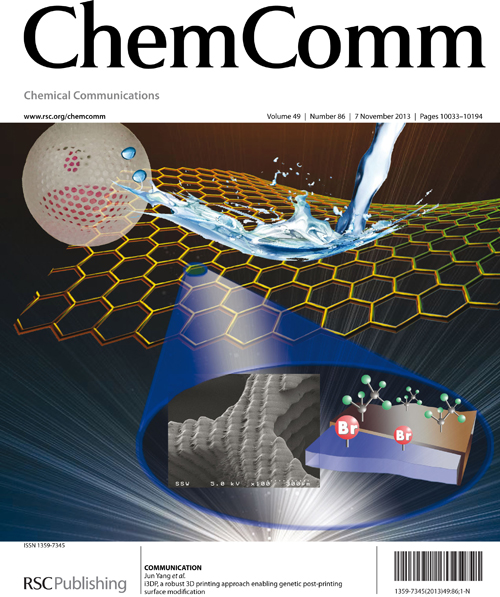3D printing is a potentially powerful manufacturing tool. However, numerous printing technologies have had to be developed as several 3D printers with single-purpose inks are often needed for different uses, which results in increasing fabrication costs.
The group for surface and interface of materials at the State Key Laboratory of Solid Lubrication of Lanzhou Institute of Chemical Physics of the Chinese Academy of Sciences and co-workers in Jun Yang’s group at the University of Western Ontario in Canada have developed an initiator integrated 3D printing approach (i3DP) to enable post-printing surface modifications for various applications where a bromine-containing acrylate is added to a 3D printing resin.
To test their integrated initiator approach, the group fabricated lattices containing the polymer brushes and modified them to be either superhydrophobic or superhydrophilic. One cubic superhydrophobic lattice was shown to repel a water droplet. Another superhydrophobic structure was in the form as of 2.5 cm diameter hollow mesh ball with 1 mm pores. When filled with water, the hydrophobic ball effectively held the fluid without leakage, even when shaken.
This approach makes the 3D printing more practical especially where surface properties are critical, such as biomaterials, biomedical supplies, and microfluidics.
The paper was published in Chem. Commun.(Chem. Commun.2013, 49, 10064). It has been selected as the cover and highlighted by the Chemistry World ( http://www.rsc.org/chemistryworld/2013/09/3d-printing-ink-surface-modification) recently. Supported by the Oversea Project of CAS, Dr WANG Xiaolong, the first author of the paper, has gone to University of Western Ontario in Canada to pursue further study
The work has received support from the Natural Science and Engineering Research Council of Canada (NSERC), the Canada Foundation for Innovation (CFI), the National Natural Sciences Foundation of China (51171202 and 21125316) and the overseas project of CAS.

Cover of Chem. Commun.(2013, 49, 10064)

